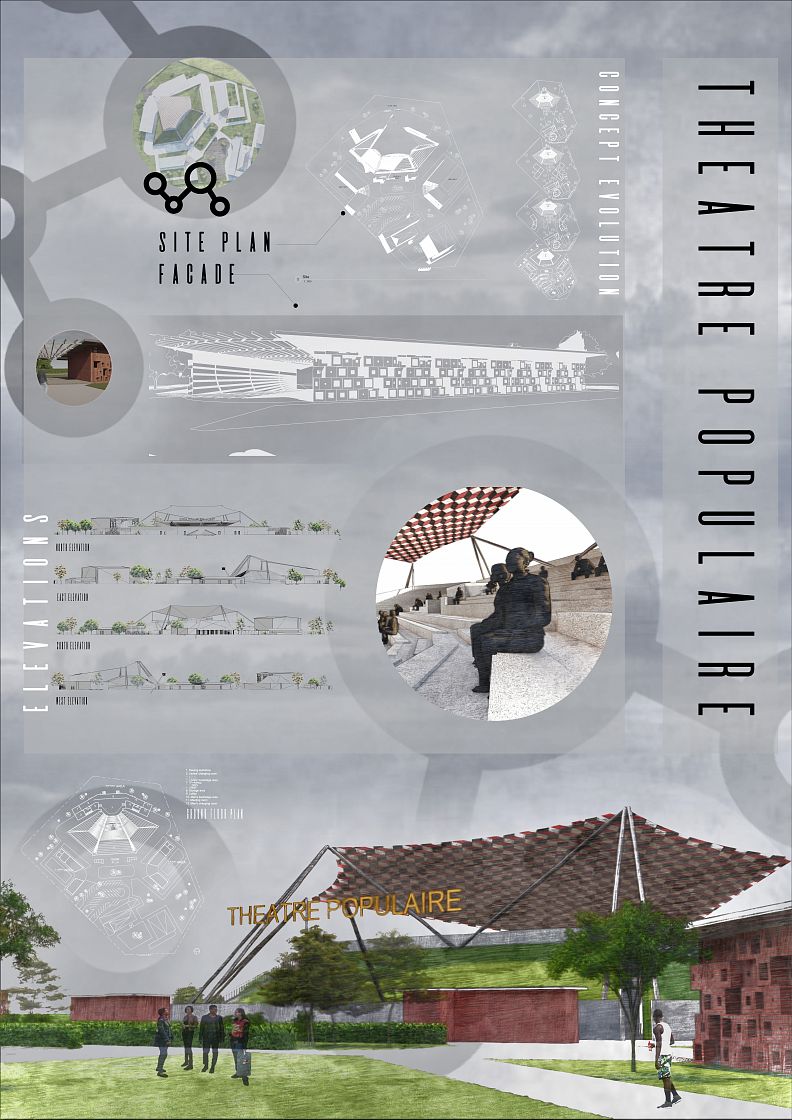THEATRE POPULAIRE

Project idea
The aim was to have a concept deeply rooted in the culture of the people that merges with the founding objectives of the theatre in order to have something the people could own as their own. We tried to weave in elements of culture to fit the modern-day use. Weaving in the new spaces into the old ones. Picking elements from the old and using in the new.
Music and dance remain an important part of the Mossi culture for both work and entertainment. The space is also an avenue for revenue and work while offering entertainment. The main instrument among the Mossi for this was the drum. Among them, the Djembe which means ‘everyone gather together in peace’. This served as a guiding element for the design.
Project description
The space is modeled based on the construction process of the Djembe. The vertical loops are woven into the top rings and bottom rings connecting the membrane to the shell which we likened to the connection of the existing CDC buildings and the rehabilitated amphitheater using geometry. Having the spaces fit into each other.
The site layout is developed from the elevation of the Djembe with the amphitheater as the visual focus.
The amphitheater is also sheltered from external elements by a tensile membrane and interweaving support like the Djembe membrane.
There is a creation of courtyards around the Labo spaces to allow for people to meet and also allow for smaller outdoor performances.
Technical information
The proposed construction material is rammed earth blocks which can be easily made by the locals, combining specific cultural requirements with sustainable materials. The Labo area, with perforated “cubes” that jut out of the walls much like the timber beams of Sudano-Sahelian mosques in the region. Daylight, thermal dynamics and rich experiential opportunities are captured in these structures and the earthen materials help achieve an indissoluble unity with the terrain.
The rehabilitated amphitheater is sheltered under canvas which will be sourced from recycled billboard canvas, held up on stainless steel tensile cables and braced with CHS steel members. The expansive canvas shields the audience from the harsh sunlight and also presents an ideal opportunity to harvest rainwater.
Deep eaves on the East-West axis and recessed openings allow for sun shading.
Co-authors
Kimberly Mong'are, Moses Kyeba, Emma Neema














